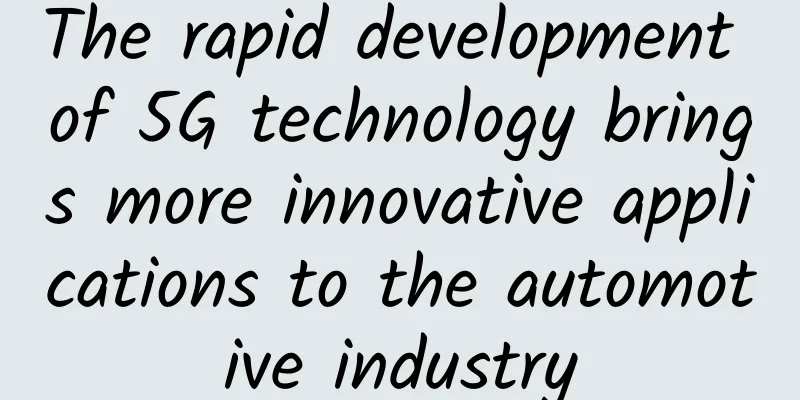Several secrets to protect cabling in green data centers

|
At present, the degree of enterprise informatization is getting higher and higher, the capacity of single files is getting larger and larger, and the applications supported by data centers are becoming more and more extensive, all of which have led to an increasing amount of information transmitted and stored in data centers. The design and operation of the basic network in the data center have to meet this challenge. While meeting the high-speed and high-bandwidth transmission requirements of the enterprise, it must also meet high performance and scalability, and reasonably control the budget.
1. Planning of the wiring system Cost is always a key factor in determining the design and construction of a data center. Any enterprise hopes to support the longest-term business development with the lowest possible cost of ownership. Although the cost of the cabling system accounts for about 5% of the total cost of the data center, it is the network element with the longest service life. Generally, the cabling system needs to have a life cycle of 10 to 15 years or even longer. Correspondingly, network equipment usually needs to be replaced every 3 to 5 years. The conclusion is that the planning of the cabling system must be able to support the replacement of 2 to 3 generations of active equipment. This is not only related to the overall cost savings of users, but also will help save more energy and available resources. Secondly, uptime is an important indicator of network reliability, which refers to the amount of time users receive important business services. 70% of service interruptions are caused by moving, adding and replacing during maintenance of the data center cabling system. Therefore, the decisions made by IT managers on the cabling system will directly affect the ability to minimize network interruption time and maximize business continuity. If the requirements for uptime are clear and the relevant equipment is determined, the required bandwidth, power and cooling load can be estimated, and the space required for the data center can be determined. 2. Selection of wiring medium Currently, the overall design of most data centers supports a data transmission rate of 1Gb/s. However, the general consensus in the industry is that the transmission rate will advance to 10Gb/s. This evolution will first occur in storage area networks (SANs) and some special application environments. It is certain that in 3 to 5 years, links that support 10Gb/s transmission will become the mainstream of data centers. Based on this situation, ISO and TIA have formulated standards for optical fiber and copper cables to support 10Gb Ethernet transmission. When choosing the transmission medium for the cabling system, it is necessary to strike a balance between factors such as bandwidth, flexibility, scalability and cost. Taking into account the development of applications, choosing the most appropriate and forward-looking transmission medium becomes the wisest choice. In short, if you need to establish an upgradeable and longer life cycle cabling system, the ideal choice is to install cables that support high-bandwidth applications and eliminate the risk of replacing cabling due to increased requirements. Next, we will help readers make a choice by comparing the advantages and disadvantages of commonly used wiring media. 1. Fiber Optic System Optical fiber is the best medium for information transmission. It not only has unparalleled advantages over copper cable systems in terms of long-distance and high-speed transmission, but also is not limited by raw material resources, unlike copper cable manufacturing, which is subject to the rare resource of raw materials - copper metal. In addition, compared with copper cables, optical cables are smaller in size, and there is no need to limit the number of connectors in the link when networking, and there is no need to consider the problems caused by electromagnetic interference. With the trend of "optical fiber in and copper out", optical fiber systems will play an increasingly important role in data centers. The price of fiber optic port equipment is still high, several times that of copper cable equipment for the same application, which is the main reason why fiber optic systems cannot completely replace copper cable systems. Secondly, fiber optic installation requires professional practitioners to use special tools, and the construction cost and requirements are relatively high. In addition, facing the emerging and highly concerned PoE Ethernet power supply technology, fiber optic systems cannot support it. For the fiber optic system in the data center, the general consensus in the industry is to recommend the use of OM3 laser optimized fiber system. This system can support 10Gb/s transmission at a wavelength of 850nm using VCSEL (vertical surface laser emitter) light source, and the distance can reach 300 meters. In terms of upgrades, some manufacturers are working to exceed the 10Gb/s standard and use coarse wavelength division multiplexing technology to transmit 40Gb/s. 2. Copper cable system Although copper cable systems are limited in transmission distance and the number of channel connectors compared to optical fiber systems, copper cable systems are the most familiar to all designers, installers, and users. They can achieve high-speed applications in a low-cost manner, from 10/100/1000 Base-T to 10GBase-T, copper cable systems can support them well. In addition, unshielded systems can support PoE applications, providing power to remote devices while transmitting data signals. When TIA issued the 942 standard in 2005, the Category 6A standard was not yet mature. Considering the market situation at the time, the standard recommended the use of Category 6 or higher cables. Today, Category 6A is the most economical link configuration method to achieve 10Gb/s transmission requirements. The system uses less than twice the cost of Category 6 but provides 10 times the transmission capacity, so the cost per Gbps is much lower. Although Category 6 can also support 10Gb/s in a short distance, its noise suppression ability and transmission performance are far behind 6A. Although the existing 10G copper port network equipment on the market is expensive, with the mass production of equipment manufacturers and the maturity of the market, the price will naturally drop, just like the original Gigabit port equipment. It is worth noting that since 10G transmission requires high power, the power consumption of early transceivers even reached 10 to 15 watts per port, so the "low-power short-distance transmission mode" is specified in the 10GBASE-T standard to reduce the power consumption of each port to 4 watts. The important point is that only Category 6A or higher cables can support this mode within a distance of 30 meters. 3. Shielded or unshielded It goes without saying that the shielding system has good anti-electromagnetic interference and information leakage prevention capabilities. For the 6A category shielding system that supports 10G transmission, there is no need to consider the external crosstalk test problem, which will undoubtedly save a lot of testing time. At present, the reason why most domestic users consider using the shielding system is due to information security considerations. In addition, the shielding system can support higher bandwidth applications, up to 1.2GHz. However, the shielded cabling system also has its development limitations. First, the shielded system is currently poorly accepted worldwide, and may only account for 5% of the entire copper cabling system market share. This means that designers and installers are relatively unfamiliar with it and need further training. In order to ensure the 360-degree continuous shielding effect of the shielded system, the shielded system must be properly installed and grounded, which is difficult to construct and time-consuming. In addition, due to the presence of the metal protective layer, when the shielded system is used to support PoE Plus applications, the heat generated by the cable cannot be dissipated, which will cause certain interference to the performance. 3. Protecting Cabling System Investment In addition to choosing the right cable media type, how to manage and protect the cabling system is also crucial to ensuring business continuity and extending the life cycle of the cabling system. Some key points are listed below: Labeling system Label identification is the basis of cabling system management and a basic element of the data center. A good label identification system will help network management personnel quickly find relevant information and shorten the time of moving, adding and changing. Good label identification can not only add value to the owner and improve the aesthetics, but also make the work more efficient, flexible and reliable. Paths and Spaces Since the data center is a high-density computing environment, there will be a large number of cables. If the reasonable paths and space planning for these cables are not carried out at the beginning of the design, the cables will be out of control and crowded as the data center operates and expands. Eventually, the cooling capacity of the data center will be affected, and it may even be impossible to maintain it, so it has to be demolished and rebuilt. The ideal solution is to make reasonable use of the limited space in the data center and plan the space and paths for copper cables, optical cables and power cables, that is, to effectively separate the three types of cables for easy implementation and maintenance. The choice of running cables above or below each has different advantages and disadvantages. It is recommended that cables that are fixed for a long time, such as trunk and horizontal cables, be run under the raised floor, and jumpers (copper cables and optical jumpers) be run above the rack. Different cables have different wire diameters. When designing the routing path, the cable path fill rate must be considered. It is recommended that the path fill rate be 35%~40% during design. Cabinets and racks In order to achieve good cable management and help maintenance personnel reduce the time of moving, adding and replacing wiring systems, cabinets and racks with cable management designs should be selected in data centers. Consider the storage of vertical and horizontal cable managers and redundant length cables in cabinets and racks, maintain the cable bending radius while making the cables more neat and orderly; avoid cable entanglement and accumulation that block the flow of hot and cold air in cabinets and racks, so that active equipment can effectively achieve heat dissipation and cooling. Intelligent physical layer management system The intelligent physical layer management system helps network administrators understand the connectivity of the network. By monitoring the connection status in real time, any network interruption can be quickly identified and reported to the system administrator immediately. This helps to quickly troubleshoot faults and security threats and minimize downtime. In addition, the intelligent physical layer management system database continuously records asset movements and configuration changes of the system and physical layer. This information can be used to meet industry-mandated reporting requirements or establish service level agreements (SLAs) for customer data centers, avoiding the human errors that may exist in manual analysis tables. |
<<: IPv6: Why should I make up for the mistakes made by IPv4?
Recommend
VULTR adds its 30th data center in the world: Osaka, Japan
It has been more than half a year since I last sh...
InspireVM: $2/month KVM-512MB/7G NVme/512GB/Chicago Data Center
InspireVM is a site under Inspire Solutions LLC. ...
Animation: How to answer the interviewer's question about TCP congestion control?
Previously, we shared the network layering protoc...
Kvmla's 10th anniversary: 50% off for annual VPS and 20% off for monthly VPS, old users get 100 off for 500 RMB, 15% off for Singapore/Japan dedicated servers
Kvmla has not released promotional information fo...
Why is 5G important for the Internet of Things?
The fifth generation of network bandwidth arrives...
V5.NET new cloud server 30% off monthly payment from HK$42, Hong Kong physical server monthly payment from HK$385
V5.NET has announced the news of new cloud server...
What is Industrial Ethernet? What are its advantages?
Industrial Ethernet is an industrial network deve...
Manually sending packets only handshakes twice, I discovered the secret of TCP
[[399328]] Planet Questions There are at least 9,...
[Black Friday] DMIT: $139/year-Dual-core/2GB/40G SSD/1TB@300Mbps/Los Angeles CN2 GIA
DMIT.io has launched a special Black Friday packa...
Racing against time: Why does Weimob's data recovery take so long?
Several days have passed since the WeMall "d...
The Importance of PoE in Surveillance and Remote Security Systems
Many devices on the network today, such as IP cam...
How to create a new financing model for product-based IT
As technology departments move away from traditio...
Review and Outlook of China's 100-day 5G Licensing
Since June 6, when the Ministry of Industry and I...
Linkerd Canary Deployment and A/B Testing
[[413903]] This guide shows you how to use Linker...
Quickly understand the core components based on Netty server
Thanks to Netty's excellent design and encaps...





![[Black Friday] VIRPUS SSD VPS 70% off, Seattle VPS monthly payment 1.5 US dollars and annual payment starting from 15 US dollars](/upload/images/67cac21c05b84.webp)



